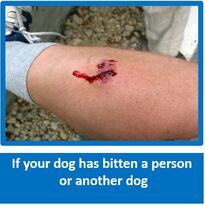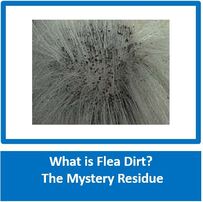|
Allergy Kit Currently On Sale - reduced from R2100 to R1850!
Our allergy test was designed as a cost effective easy-to-use pet sensitivity test to help you find out what may be affecting the health of your beloved pet. By doing the allergy test, you will be able to identify what food/chemical/environment causes your pet sensitivities are, and what to avoid in the future. Like people, all dogs are different, and may have allergies to food and products that are not common. Test very easy to do and in the comfort of your own home. www.muttmix.co.za |
The Difference Between a Food Allergy and Food Intolerance
This article was sent to us by Eileen Jarvis
This article was sent to us by Eileen Jarvis
Food Intolerance vs. Food Allergies in Dogs
If you have a sick dog, determining the root of the problem isn’t always easy. If everything else in your pup’s daily lifestyle has remained constant, a recent change in his diet could be the source; and if so, you’ll need to determine whether or not your pup is experiencing a food allergy, or a food intolerance. Both are considered to be food aversions, however they come about for very different reasons.
So, what exactly is an adverse reaction to food? Dr. Leslie Hancock Monroe, who has been a top veterinarian for over 15 years, says “An adverse reaction to food is an abnormal and unexpected response to a food or food additive.” The term “food allergy” is commonly used in error to describe all adverse reactions, but a food allergy is just one type of adverse reaction, and a food intolerance describes all adverse reactions to foods that aren’t food allergies.
Understanding the Difference Between a Food Allergy and Food Intolerance
The term “food allergies” should be reserved only for adverse reactions that have a true immune component. Food intolerances refer to all other non-immunologic adverse responses to food.
One way to think of the difference between a food allergy and food intolerance is that a food allergy is the immune system responding to an allergen that the body has previously been exposed to. Dr. Leslie notes, “A true food allergy is a hypersensitivity reaction, which means the animal has been exposed to the allergen previously, which provides the immune system time to intercept the protein and develop antibodies to the protein, which then may trigger the immunologic reaction.”
“A true food allergy isn’t very common,” notes Dr. Leslie. A food intolerance or food sensitivity is much more common, she says.
How Can I Tell If My Dog Has a Food Allergy or a Food Intolerance?
Common signs of adverse food reactions include frequent vomiting, itchy and inflamed skin, poor coat condition or hair loss, poor stool quality and gas, and sometimes even limping. The best advice is to go to your vet if you notice anything off with your dog, especially because it’s so difficult to tell if your dog’s responses are food intolerance symptoms or dog allergy symptoms.
Although food intolerances do not have an immune component like food allergies do, “they can have very similar clinical signs, especially those associated with the gastrointestinal tract,” says Dr. Leslie. She adds that “poorly digested food can also exhibit gas, gurgling and nausea—so it can be difficult to determine if the response is immune driven or not.”
Once a dog shows these dog allergy symptoms or food intolerance symptoms, it can take weeks to figure out what the responses are due to, and even longer to find the source of the response. It often takes at least 8-12 weeks of feeding to identify an effective diet if your dog develops an adverse reaction to food, and in the minority of dogs it may take up to 36 weeks. This includes visits to the vet, special diets, and of course waiting for the unpleasant food intolerance or dog allergy symptoms to subside
Dealing with an adverse reaction to food is never fun. With the right preparation, you can decrease the chances your dog will have an adverse reaction to food, and increase the chances of more time for comfort and fun for both you and your furry friend.





